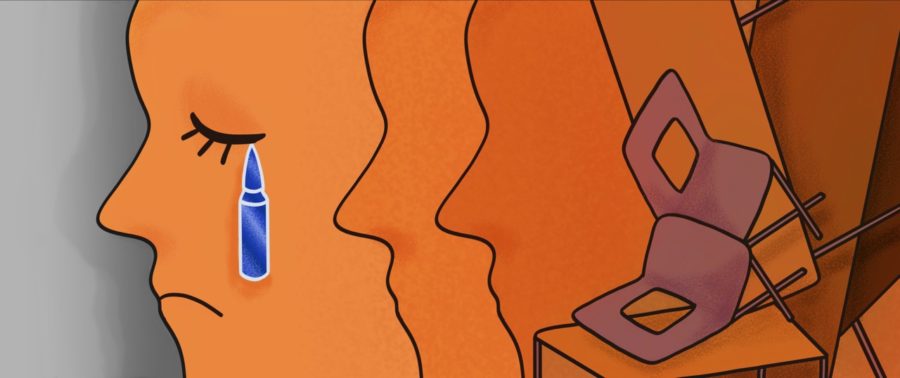This June, Harker encountered an unarmed intruder on campus — one of the rare times when a shelter-in-place was not a drill. With this incident and the heartbreaking school shooting at Robb Elementary School in Uvalde, Texas on May 24, where 19 students and two teachers were killed, the threat of a school shooting has become more salient.
While we as students have little impact on nationwide gun reform, we can still turn our attention inward and consider what we can do as a community to decrease the risk of gun violence at Harker with proactive measures and increase our preparedness with more detailed and thorough drills and procedures.
Proactive measures to prevent school shootings usually focus on treating student mental health. A primary cause of students turning to violence is bullying: according to a 2004 study conducted by the United States Secret Service and the United States Department of Education, 73% of school shooters had a grievance against their target, and 71% felt threatened or bullied. Other models attribute such violence to negative feelings like loss or loneliness according to a literature review from 2015.
If Harker students are feeling bullied they can talk with Harker’s counselors and receive emotional support. To resolve the situation, they can anonymously contact the Division Head or Dean of Students with the name of the aggressor and the names of anyone else involved with the bullying, including the victim and when the incident occurred.
Harker has many counselors and caring adults at school who can give support to students who feel unsafe or otherwise need help, and, through events like Challenge Day, we have an abundance of options if we feel distressed. However, choosing to seek help can be a challenging decision to make, which is why some schools have turned to screening.
Screenings are exams which try to detect mental disorders and assess mental health. Conducting these screenings can identify students who need help the most. It can also accurately and effectively connect students to mental health services.
Screening students at Harker could be mandatory or non-mandatory, but the most important part is making the tool simple to find and use. Some websites dedicated to mental health like Mental Health America have free screening tools for schools to use, so making it accessible could be as easy as creating a resource in the student portal or promoting them in school-wide meetings.
Although screening can be used to prevent potential violence, it is important to acknowledge that most people with mental health issues are not violent, and supporting mental health efforts has benefits beyond limiting school shootings.
Ultimately, we need to have more comprehensive discussions on the general mental health of the student body, working to provide discreet, safe options for students who are struggling with mental health. Preventative measures such as screening can be incredibly effective in keeping a healthy environment and maintaining school safety, but drills are still important in order to keep ourselves safe in the event of a school shooting.
The main way we prepare ourselves for a violent threat on campus is a lockdown drill. Unfortunately, these drills can sometimes be ineffective, for a variety of reasons.
We frequently hear the phrase “run, hide, defend” when discussing active shooter protocols, yet we only practice “hide.” Knowing when to run or defend and how to do so are crucial details that require more guidance than a simple statement.
Each time there is a lockdown drill, we have the opportunity to practice our defense in case of a real school shooting situation, yet students don’t often take these drills seriously. For the sake of protecting the lives of ourselves and others in case of a shooting, we have to practice with focus and intent.
Students are not the only ones responsible for knowing and executing drills, though. Teachers are the authority in the classroom, and as such, should be trained on coordinating lockdown procedures confidently and with composure, but the only training they receive is the school-wide presentation and feedback on the lockdown setup after the drill has already happened.
Last school year, Harker practiced the annual lockdown drill in April — what would have happened if we had a shooter threat in the fall, when half of the student body had never experienced such a drill at the upper school? Additionally, there is nowhere online to access the slideshow about the lockdown procedure or any other relevant information discussing the drill.
In the aftermath of countless mass shootings and an intrusion on our own campus, we cannot be passive bystanders and wait for a more dangerous situation to happen to us in order to enact change. Our system for responding to school shootings needs an update.
This story was originally published on Harker Aquila on September 14, 2022.




































